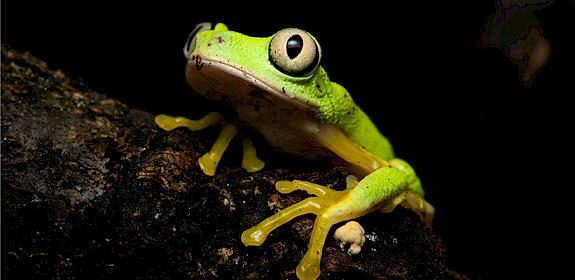Russia boosts protection for Tigers
Trade, transportation and possession of endangered species will all be considered crimes under new legislation proposed by the Kremlin.
Moscow, Russia, 30th October 2012—Tiger hunting and habitat loss are the biggest factors in the decline of Tigers, which has seen the world lose 97 per cent of its wild Tigers in the last century, including four sub-species to extinction. There may be as few as 3,200 of the endangered animals remaining.

Currently, laws in the Russian Federation, home to many of the world’s remaining Tigers, only consider the actual killing of an animal to be a crime. Poachers stopped carrying the animals or their parts would claim they had found them dead.
“It is a significant step towards protection of Tigers and other endangered species threatened by trade and poaching,” said Igor Chestin, CEO of WWF Russia who was heavily involved in discussions with the government. Russia has agreed for its Ministry of Natural Resources and Environment to prepare the draft law in co-operation with WWF and TRAFFIC.
Recently one man was found in possession of the remains of six Tigers, another one with eight Tiger skins. Under the current law they might only be eligible for an insignificant fine.
WWF and its partner TRAFFIC are campaigning for greater protection of threatened species such as rhinos, Tigers and elephants.
Demand for ivory, rhino horn and tiger parts from consumer markets in Asia is driving wild populations dangerously close to extinction. WWF and TRAFFIC are calling on governments to combat illegal wildlife trade and reduce demand for illicit endangered species products.
“Trade, transportation and possession of endangered species becoming a crime is a long-awaited measure that we believe will dramatically reduce poaching,” Chestin said.
Russia has also announced steps towards more protection of Tiger habitats.
The Primorsky region, where 90% of the Russian Tigers live, was requested to ensure no commercial timber harvest takes place in the regional protected areas and nut harvesting zones. Regional administration was also ordered to prevent any commercial logging in upper and middle stream of the Bikin River.
By the 1940s, hunting had driven the Amur Tiger to the brink of extinction—with no more than 40 individuals remaining in the wild.
The subspecies was saved when Russia became the first country in the world to grant the Tiger full protection.
By the 1980s, the Amur Tiger population had increased to around 500. Continued conservation and antipoaching efforts by many partners—including WWF—have helped keep the population stable at around 400 individuals. In 2010, the Russian Government adopted the Strategy for Tiger Conservation, making commitments to double the number of wild Tigers by 2022 and to stiffen punishment for those caught smuggling Tiger products.




